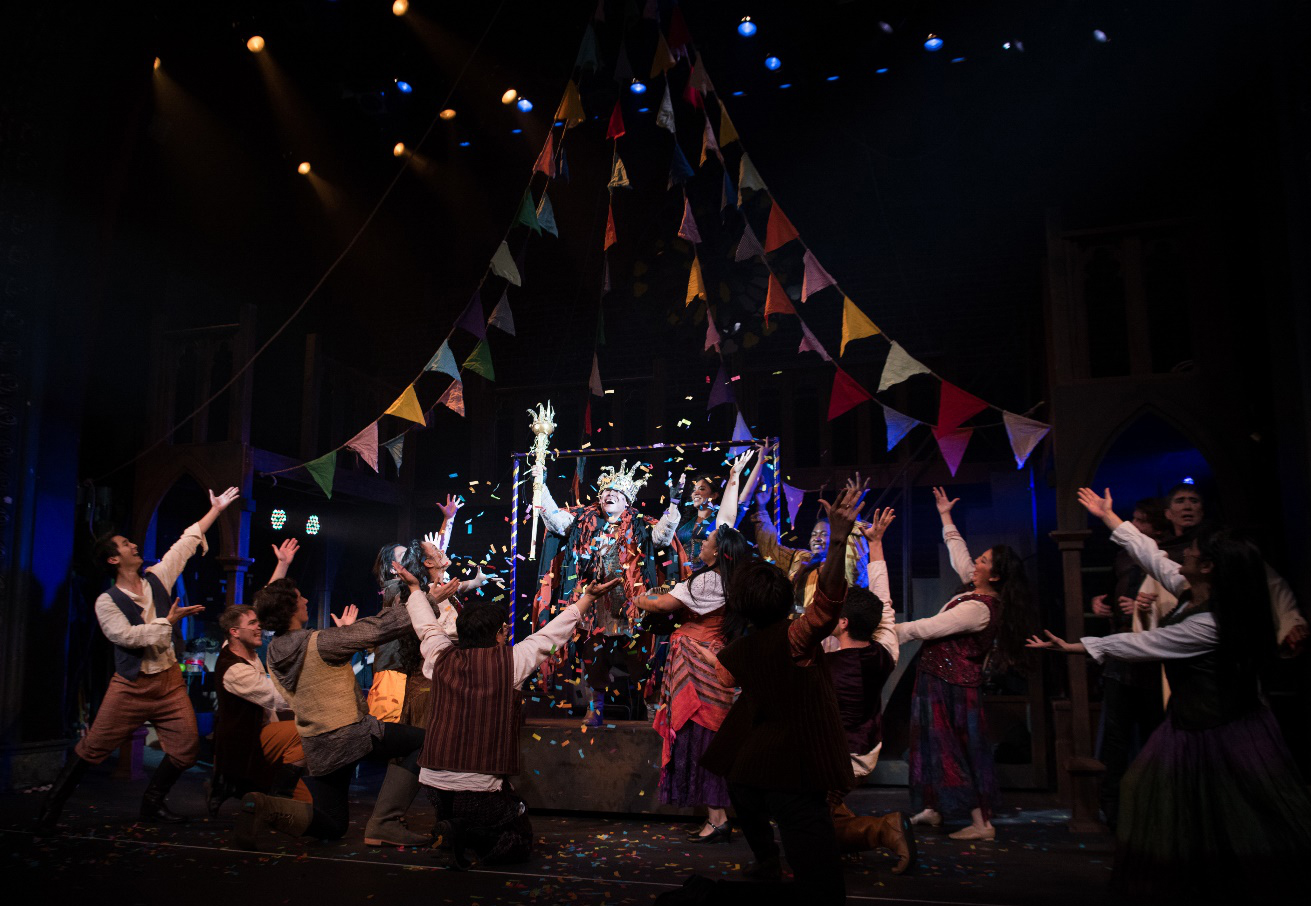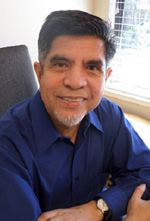Catch a Rising SF Bay Area Stage Star
/Alysia is second-generation American, the second child of Noel and Mona Beltran. Noel, her father, is originally from Paniqui, Tarlac, while her mother, Mona, is Salvadoran-Colombian—making Alysia and her siblings, born, raised, and educated entirely in San Francisco, 100% California Americans.
Alysia’s graduation picture from San Francisco State University, 2017, her father, Noel, top; mother Mona, lower left (partially cut off), and Alysia, right.
The Hunchback of Notre Dame is based on the second most famous novel by the French author, Victor Hugo, who is better known for Les Miserables.
Hunchback tells the story of Quasimodo, a disfigured, misshapen youth but one with a golden heart, who survives as a bell ringer at the Notre Dame Cathedral in the Paris of 1482. Quasimodo endures the double torments of manipulation and mental abuse from his keeper, Deacon Frollo. His suffering doesn’t douse his kindness and unrequited love for the gypsy girl, Esmeralda who, in turn, ignites forbidden fires in the repressed loins of the villainous Frollo. (It’s almost as if Quasimodo fell off the Les Miserables cart and was given his own wretched tale by author Hugo.)
Alysia says that her love for (musical) theater began when she was ten years old and saw a touring production of The Lion King. A few years later, her older sister, Collette, brought home a copy of Rent, and it was then that Alysia decided to pursue performing in musical theater as an avocation.
Like most people from traditional families where both parents have worked, pursuing your heart’s desires in art is always a risky thing. So, there has to be solid back-up plan in case that doesn’t work out. Thus, Alysia went for her bachelor’s degree in Child and Adolescent Development at San Francisco State University. She graduated in December 2017. All the while, she was taking acting gigs and holding a full-time day job.
Prior to Hunchback, Alysia performed in SF Bay Area productions of Miss Saigon (ensemble, Broadway by the Bay), Spamalot, Hair, The 1940s Radio Music Hour, and last spring, Gandhi the Musical, when she had to commute from Sacramento after matinee performances there in order to make the auditions and call-backs for Hunchback in San Francisco. The brief, nerve-wracking commute paid off when she got the nod to play Esmeralda.
Alysia comes at a lucky time in mainstream theatrical performances (traditional American/Broadway musicals), when there are more opportunities for actors of color than ever before. With the wealth and diversity of actors of all shapes, colors, and sizes in the Bay Area, theatrical production companies are simultaneously casting ethnic roles more honestly and more color-blind.
So Alysia is not only a natural for the role of Esmeralda the gypsy girl. (The gypsies of Europe are also called “Roma” since many of them came from what today is Romania [of Nadia Comenci and Count Dracula fame], although their ethnic roots can be traced to India.) Alysia easily identified with the role because the character fits her “own advocacy for the empowerment of women and disadvantaged youth (with the central character, Quasimodo, being a ‘special needs’ figure as viewed from a 21st century perspective).”
Alysia is only twenty-one years old but feels that the character of Esmeralda is probably around twenty-five, a little wiser and more coarsened. She finds the role of Esmeralda very relevant today.
As for future roles, Alysia has one eye on a place in the breakout musical Hamilton, where she could be a shoo-in since that production is purposely casting actors of color in “white roles” for pure theatrical emphasis and effect, and another on Aldonza/Dulcinea from Man of La Mancha. Aldonza, the tavern wench, is not unlike Esmeralda, except Cervantes’ heroine seeks to gain self-respect while Esmeralda has more altruistic goals. For those roles, however, Alysia would be needing an Equity card and more singing and acting lessons in pursuit of that all-important card.
Rising Fil-Latina actress Alysia Noelle Beltran belting out Esmeralda’s big number, God Help the Outcasts. From the film score by Stephen Schwartz (lyrics) and Alan Mencken (music).
Hunchback has had three live-action film treatments: the silent-film version in 1923; the first talkie version in 1939; and the full-color, wide-screen French-produced version in 1956. Disney came up with its own animated, musicalized version in 1996, with the voice talents of Tom Hulce (as Quasimodo), Demi Moore (the speaking voice of Esmeralda); Heidi Mollenhauer (as Esmeralda’s singing voice); Kevin Kline (as Phoebus); and Tony Jay (as the vengeful Deacon Claude Frollo).
This stage version of Hunchback, based on that Disney film and score, has taken a circuitous route to the stage. While all the other Disney animated films of recent years have been seamlessly transformed into English-language stage versions—Beauty and the Beast, The Lion King, The Little Mermaid, Aladdin, Tarzan, and Frozen—The Hunchback, for some reason, struggled to find a workable English-language stage version.
The first reincarnation using the Alan Mencken film score (with lyrics by Wicked composer Stephen Schwartz) came together in the German version, Der Glöckner von Notre Dame ("The Bellringer of Notre Dame"). While a “lite,” English version of the show (only an hour long) has played in some of the Disney parks and cruise ships through the years, the much darker Der Glöckner has not.
It was not until 2013-14 that Disney got serious with a US version when it had the English iteration workshopped at a college in Florida. That was followed by more professionally mounted productions at the La Jolla (San Diego) and Paper Mill (New Jersey) Playhouses with, by then, a more serious eye towards making it to Broadway.
However, it seemed that the right tone to make the show Broadway-worthy, was elusive. You have a show about base, carnal desires and deep yearnings and a sympathetic hunchback hero who converses with three “stone gargoyles.” That ploy somehow worked on film, but would it carry over in a live, musical show?
The hunchback, Quasimodo, is ridiculed and mockingly “crowned” in the Feast of Fools.
The show is quite fitting for our time and San Francisco because one of its major themes and songs is Sanctuary—that the Cathedral of Notre Dame provides sanctuary for the marginalized gypsies whom the Frollo character demonizes and persecutes. (Why does that sound so eerily familiar?) Hunchback runs through August 8, 2018. Catch a rising Fil-American stage star while you can.
Thanks to Bay Area Musicals and their publicist, Jonathan White.
Myles A. Garcia is a Correspondent and regular contributor to www.positivelyfilipino.com. His newest book, “Of Adobe, Apple Pie, and Schnitzel With Noodles – An Anthology of Essays on the Filipino-American Experience and Some. . .”, features the best and brightest of the articles Myles has written thus far for this publication. The book is presently available on amazon.com (Australia, USA, Canada, Europe, and the UK).
Myles’ two other books are: Secrets of the Olympic Ceremonies (latest edition, 2016); and Thirty Years Later. . . Catching Up with the Marcos-Era Crimes published last year, also available from amazon.com.
Myles is also a member of the International Society of Olympic Historians (ISOH) for whose Journal he has had two articles published; a third one on the story of the Rio 2016 cauldrons, will appear in this month’s issue -- not available on amazon.
Finally, Myles has also completed his first full-length stage play, “23 Renoirs, 12 Picassos, . . . one Domenica”, which was given its first successful fully Staged Reading by the Playwright Center of San Francisco. The play is now available for professional production, and hopefully, a world premiere on the SF Bay Area stages.
For any enquiries on the above: contact razor323@gmail.com
More articles from Myles A. Garcia






